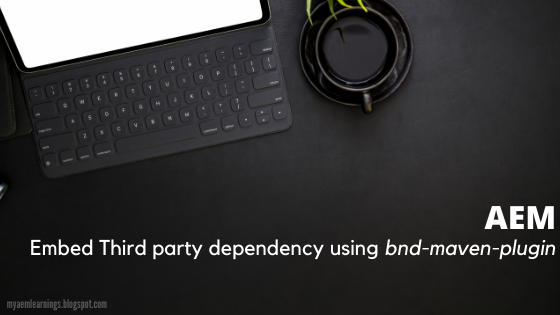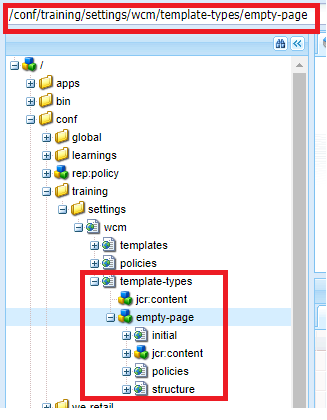OSGI Factory Configuration implementation
OSGI Factory configuration is used to have many instances of an OSGI config (represented/identified via an identifier) for the single OSGI service/PID.
Most often used OOB Factory configurations for example:
Java class referencing Factory service:
Most often used OOB Factory configurations for example:
- Logger Factory/writer configuration (for log statements)
- Service user Mapper service Amendment (for using service resource resolver in projects)
Few sample real time use case for the need of OSGI factory config:
- For multi tenant projects, if we have generic service used across tenants with properties/attributes specific to tenant.
- For single tenant, generic service targeting all locales with properties/attributes specific to locale. (where generic service -> holds logic in the lines of calling third party service for retrieving/updating information.)
Implementation: (In terms of OSGI R6 annotations):
- Create Object Class Definition(OCD) defining desired properties for the OSGI service. - OSGIFactoryConfigOCD.java
- OSGI Service/Factory service to retrieve config values. - OSGIFactoryConfigDemo/OSGIFactoryConfigDemoImpl.java
- Business logic to be developed as OSGI service/Servlet/Sling Model or any java class where OSGI factory service(created in #2) can be referenced. - In this example, have used servlet, OSGIFactoryConfigDemoServlet.java
OCD:
For the sample real time use case mentioned above, lets say
- We need to configure API end point and AppId/any similar properties to access the same.
- Configure another property named sitename or locale or any identifier based on the actual requirement and existing project set up.
OSGI/ OSGI Factory service:
- OSGI service can be declared as factory service as below (factory=true on @Designate annotation)
- Defines methods to retrieve the config values which will be available once the service is activated. (config in the below snippet holds the entire OSGI config values)
Java class referencing Factory service:
Targeting specific instance:
Let say, we are able to extract the sitename(key used in the map) from servlet request. (Changes to be taken care in the way we call the servlet accordingly) Using that, we can the retrieve the respective map value(its entire config) and use it accordingly.
- Lets say we have created 5 OSGI configs of the same PID with unique identifier, one each for tenant and if there is a need to target one such tenant, we can reference as below.
- Out of 5, config which has sitenameIdentifier property value as demosite will be picked up.
@Reference(target="(siteNameIdentifier=demosite)")
private OSGIFactoryConfigDemo osgiDemo;
Multiple instance reference:
private OSGIFactoryConfigDemo osgiDemo;
- bind method will be called when the factory service is available and configs are stored in collection. In this case, map is used where “key” -> sitename, one of the config property and “value” -> entire config object.
- Let say, we have created 5 OSGI configs of this PID and if the service is active -> All 5 configs will be available in the map object.
private Map<String,OSGIFactoryConfigDemo> configMap;
@Reference(name = "osgiFactoryConfigDemo", cardinality = ReferenceCardinality.MULTIPLE, policy = ReferencePolicy.DYNAMIC)
protected synchronized void bindOSGIFactoryConfigDemo(final OSGIFactoryConfigDemo config) {
if (configMap == null) {
configMap = new HashMap<>();
}
configMap.put(config.getSiteName(), config);
}
protected synchronized void unbindOSGIFactoryConfigDemo(final OSGIFactoryConfigDemo config) {
configMap.remove(config.getSiteName());
}
On the similar lines, based on the overall requirement + existing project set up + with understanding of factory config implementation, we can decide on the ways of retrieving multiple configs of same PID and arriving at generic service.
Code on GitHub Repo:
- aemlearnings-samples (Above mentioned java files in respective package inside core)



NFT Game Development Company |
ReplyDeleteStablecoin Development Company |
Smart Contract Development Company |
Cryptocurrency Development Services |
Token Development Company
ICO Development Company |
Token Development Services
Thanks for Sharing the Useful Information.
ReplyDeleteBEP20 Token Development Company
ERC20 Token Development Company
Solana Token Development Company
NFT Token Development Company
Polygon Token Development Company
import random
ReplyDeleteclass WhiteLabelCryptoExchange:
def __init__(self, name, currencies):
self.name = name
self.currencies = currencies
def trade(self, currency1, currency2, amount):
price = random.randint(1, 1000)
commission = random.randint(1, 10)
if amount > 0:
# Buy
cost = price * amount + commission
return cost
else:
# Sell
profit = price * amount - commission
return profit
exchange = WhiteLabelCryptoExchange("My Exchange", ["BTC", "ETH", "USDT"])
print(exchange.trade("BTC", "ETH", 10))
# Output: 1000.5
print(exchange.trade("ETH", "USDT", -10))
# Output: 90.5
This code snippet defines a simple white label crypto exchange. The exchange has a name and a list of supported currencies. The trade() method allows users to buy and sell cryptocurrencies. The price of a cryptocurrency is randomly generated, and a commission is charged for each trade.
This is just a simple example of a white label crypto exchange. In a real-world application, the white label exchange software code would be more complex and would include additional features such as order book management, trade history, and user accounts.
The code snippet is written in Python, but it could be easily translated into other programming languages.
Great information shared in this post.Ethereum token development company
ReplyDeleteGood Post it is usefull for us
ReplyDeleteToken Development Company
Game Development Company
This is a great explanation of OSGI Factory configurations! The examples make it much easier to understand how this can be applied in real-world scenarios. Thanks for sharing!
ReplyDeleteMezzanine floor delhi
warehouse racking system delhi
This comment has been removed by the author.
ReplyDeleteGreat article! Could you elaborate on how to handle multiple instances dynamically in a production environment?
ReplyDeleteSlotted Angle rack delhi
Multi tier rack india
The Logger Factory example is spot on. I’ve used it in my project, and it really helps in managing configurations effectively.
ReplyDeleteSelective Pallet Racking System india
cable tray delhi
This is super helpful! How would you suggest debugging factory configurations if they don’t behave as expected?
ReplyDeleteSlotted Angle rack
Racking system
Nice write-up! Can you explain how to integrate OSGI factory configurations with custom workflows?
ReplyDeleteIndustrial Pallet Racks
barrel storage rack india
Thanks for the article. What would you recommend for best practices when creating factory configurations for multi-tenant applications?
ReplyDeleteSlotted Angle racks noida
Multi tier rack noida
I found the use case for single-tenant locales really interesting. Can you provide more examples of attributes specific to locales?
ReplyDeleteDust Collector
Heavy Duty Rack delhi
Nice blog!!
ReplyDeleteGreat work and you can also read our latest blog here C45 Material
ReplyDelete